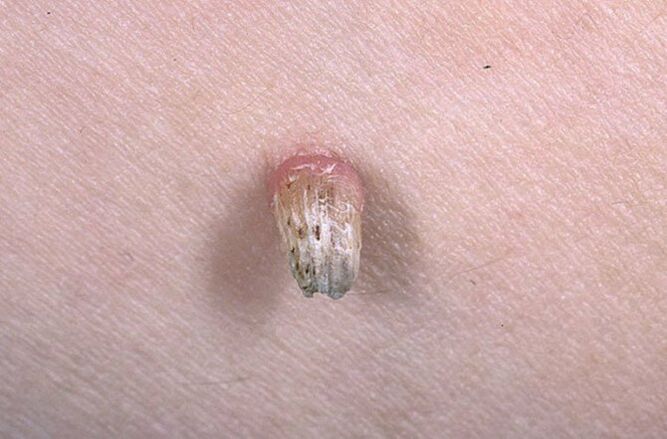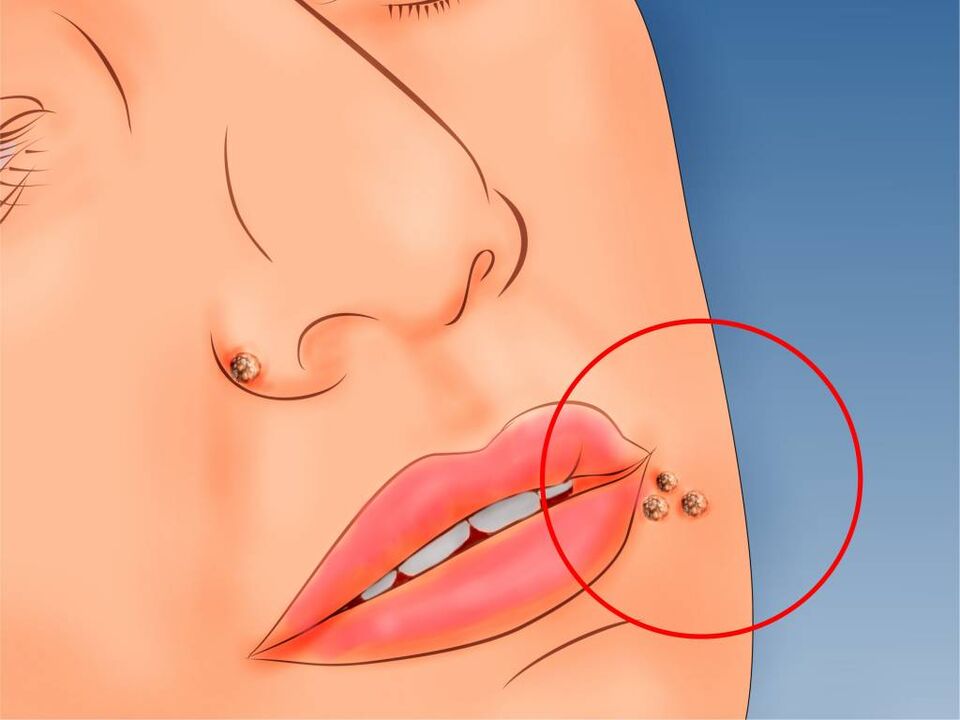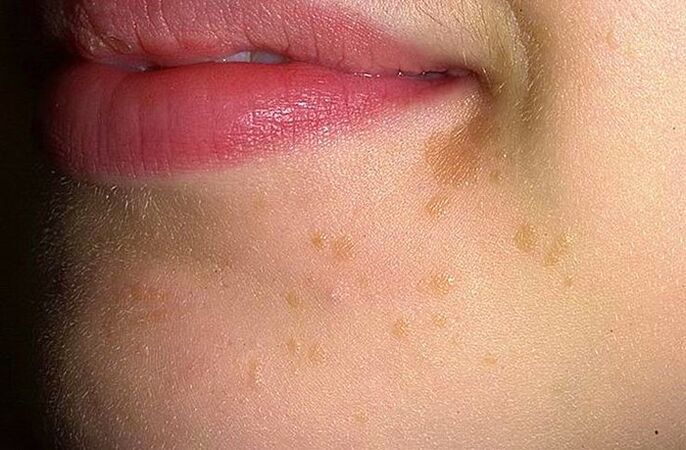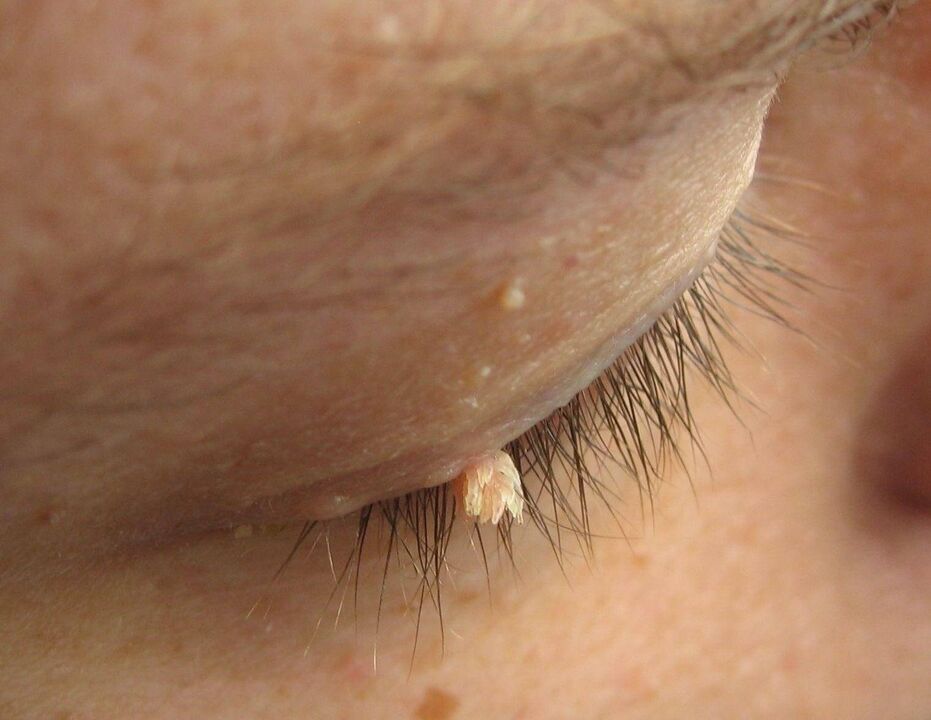Each strain of HPV causes its own type of papilloma. They differ in appearance and where they appear. Low or high levels of carcinogenicity. Papillomas are the result of the HPV virus. Sometimes skin tumors appear in completely different places on a person's skin and share some common symptoms. They have a common name - papilloma. They vary in shape, structure, body location, degree of cancer risk, and more. Based on these factors, papillomas have their own special names. What are papillomas and why do they appear?
What are papillomas?
"Papilloma", which is the Latin translation of the word papilloma. These growths on the skin are caused by the HPV virus. Any papilloma is a benign tumor, however, depending on the strain (type) of the papillomavirus, they have a cancer risk.
Various papillomas according to cancer risk:
- Low cancer risk.
- High cancer risk.

The second group included strains - 82, 73, 68, 59, 58, 56, 52, 51, 45, 39, 35, 33, 31, 18, 16. Growths on the skin can be completely different in color. The color scheme of papillomas can range from light to almost black. Sometimes elongated papillomas develop on the body, other types of HPV are flat or, conversely, overgrown, resembling a rooster's comb.
Only a doctor can determine the nature of the papillomavirus by making the necessary diagnosis:
- perform a visual inspection of the patient;
- Tests are done to determine the virus strain.
The virus enters the body under conditions favorable to it. It must have been in contact with virus carriers or contaminated items, and the immunity has decreased.
Usually HPV is easily blocked by the immune system, which fails for a number of reasons:
- long-term medication;
- exacerbation of chronic disease;
- medication;
- Excessive use of alcohol and cigarettes.
Any disease requires timely treatment. Papillomas on the body have an unpleasant growth characteristic that sometimes mutates into a neoplastic disease. Seeing a doctor is a necessary precaution.
Simple papilloma (vulgar)
This is the most common type of papilloma on the body. People call them warts, and they appear gradually. First, a small nodule will grow on the skin. Gradually, it increases in diameter and changes in color from pale flesh-colored to a more saturated brown. The structure of ordinary papillomas also changes, becoming hard and keratinized.

Gross papillomas are more commonly located in:
- palm;
- finger;
- skin between fingers
- knee;
- Sometimes forms on the face, back, and neck
Such tumors can occur in groups. First, "pillomas of the breast" appear, and then daughter tumors are formed.
Children and teens are especially vulnerable to this type of HPV. Gross papillomas are usually benign in nature, they do not degenerate into neoplastic structures. Strains 75-77, 26-29, 41, 38, 49, 57, 65 are responsible for the appearance of these tumors.
Simple types of viruses on the body include plantar warts. The name refers to where they appear. Growths on the soles grow individually and can be identified by the characteristic prominent edges. Usually not an inconvenience, but can sometimes interfere with walking. In order not to confuse corns with plantar warts, remember that corns have a smooth, flat surface on which a pattern of skin will appear. Plantar warts are caused by strains 1-4.
These and others can be easily removed in a medical clinic. But don't rush to see a doctor, this growth will go away on its own.
flat papilloma

This growth is immediately different from other skin tumors.
It rises only a little above the skin, and if one looks closely, its surface appears dense and appears to consist of small nodules. A flat wart has no predetermined shape; it can have jagged edges or, conversely, be rounded.
Flat papillomas do not have the keratinization process (death and keratinization of skin cells), and therefore, it does not have the characteristic skin grooves of other types of papillomas.
This buildup is usually light in color and sometimes darkens and turns brown. Flat papillomas cannot be dark brown.
Place:

- calf;
- arms;
- back;
- Show up on cheeks, around the eyes and on the chin.
Outsiders will immediately notice flat tumors (if they are in an open area). Besides being visually ugly, they can cause physical discomfort in the form of itching. They start to "burn" when you try to scratch them.
Such structures should be shown to a dermatologist. You are less likely to prescribe the correct treatment for yourself. The doctor must examine you, make a diagnosis, and prescribe a treatment plan taking into account all physical features. This growth is easier to get rid of immediately after it appears. Old growth must be removed by manipulation. Flat papillomas cause 49, 28, 10 viruses.
Apical papillomas (warts)
They have a characteristic appearance, which makes them not to be confused with other types of papillomaviruses. Superficially, this papilloma can be compared with "cauliflower" or "cockscomb". Genital warts are attached to the skin and grow on a short stem. They are solitary and grow in large groups. This female HPV tumor can reach a very large size.
The growths change in color depending on where they appear. Genital warts can be white, flesh-colored, pale pink, and range in color from light red to maroon. Sometimes the growth secretes a foul-smelling fluid.
Condyloma acuminatum often hurts because of the special part.
The main distribution of genital warts:
- sexual organs.
- anal area.
- crotch.
- urethra.
- Female vagina and cervix.
This HPV is only transmitted sexually. Its development inspired the virus 69, 55, 54, 51, 44, 42, 6, 1
If left untreated, it may develop into preneoplastic disease. Viruses accumulate in tissues near the growth and alter the DNA composition of epithelial cells and mucous membranes, leading to penile tumors in men and cervical cancer in women. Genital warts must be removed.
filiform papilloma
They are also called acrochords. They mostly grow alone, but they can also grow in groups. If it is accidentally torn off, a new protrusion will reappear in its place, and, growths can wander around the body, growing. They don't transmit pain.

Aesthetic rejection of accumulations is more, especially when papillomas grow on the face. Color ranges from skin tone to brown. The apical cord is oblong, elastic, and sometimes has keratinizing papillomas.
Favorite places on delicate skinned body parts:
- face (eyelid area, nose);
- inguinal folds;
- on the neck;
- armpit;
- Under the breasts (female).
If you have folliculitis on your face, don't use scrubs and brushes to avoid hurting it. Underarm growths are often injured by razors.
It is best to go to the clinic and have the tumor removed before it becomes infected and becomes a tumor. The latter rarely occurs in filiform papillomas.

The viruses that cause this type of HPV are types 2 and 7. Acrochords are more common in older people because the skin loses its elasticity over time.
Sometimes, this disorder affects children and adolescents.
These are the most common forms of HPV. Based on the information about the type of virus, you can independently make a preliminary diagnosis. For a more accurate diagnosis, medical tests are required.
In addition to these forms of HPV, other types of papillomas can occur. For example, laryngeal papillomatosis, choroidal papilloma (on the brain), and gastric papilloma are called gastric papillitis. Internal papillomas are the most dangerous, and sometimes patients see their doctor for advanced HPV. You could die from an internal tumor. For example, growths in the larynx interfere with the breathing process and can cause choking. Any HPV illness requires immediate medical attention.














































































